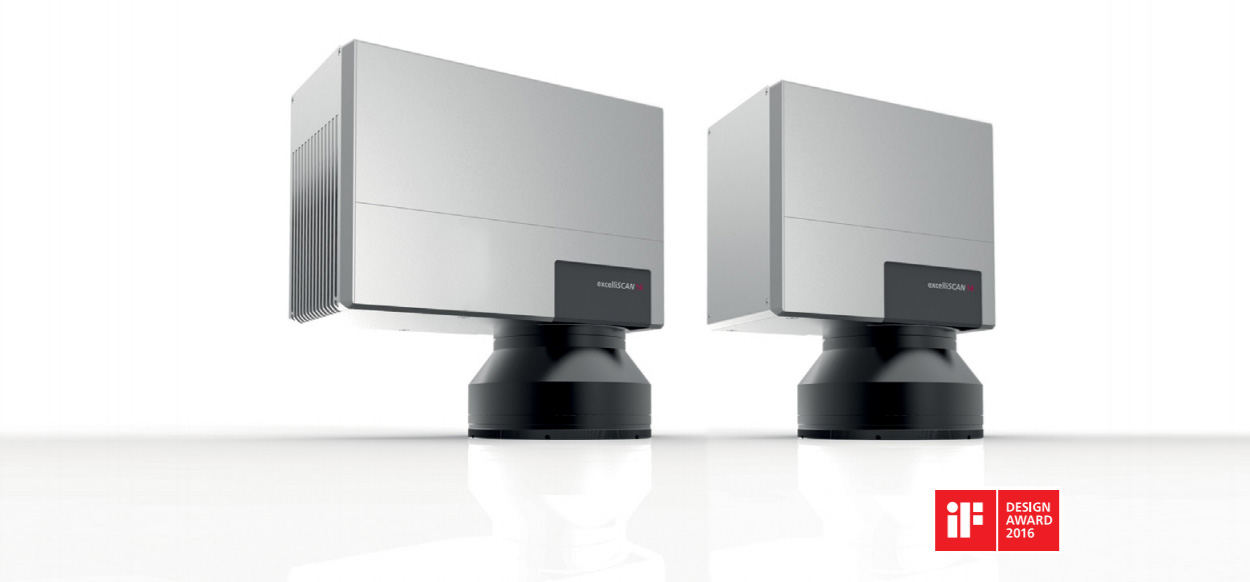

- Offer Profile
-
With over 30,000 systems produced and delivered annually, SCANLAB GmbH is the world-leading and independent OEM manufacturer of scan solutions for deflecting, positioning and guiding laser beams in three dimensions.
Visit us on youtube
Laser Beam Deflection and Positioning Systems

- The company's fast and precise high-performance galvanometer scanners, scan systems and control solutions are designed and manufactured in Germany to the highest quality standards. Its scan heads and system solutions are successfully deployed in industrial materials processing and the electronics, food and beverage industries, as well as biotech and medical technology.
2- and 3-Axes Scan Systems
- SCANLAB offers a broad variety of scan heads and scan solutions for different applications.
excelliSCAN
-
SCANLAB’s premium scan head
For highest presicion and dynamics
With innovative housing and SCANahead control for full utilization of scanner dynamics
Scan Components, Solutions and Add-Ons

Scan Components
- Vast offer of scan accessories and optical components

3D axes and 3D Add-Ons
- Dynamic focusing units and z-Axes extend 2D systems into 3D scan systems

Advanced Scanning Solutions
- Offer customers highly integrated solutions for demanding applications

Control Electronics
- Superior control boards for 2D and 3D scan systems

Software & Calibration
- SCANLABs software and calibration solutions ease professional laser processing

Galvanometer Scanners
- Broad variety of galvos and servo amplifiers
Applications
-
The broad palette of scan solutions fulfills demands for highest speed, more precision, increased efficiency.
The offered scan solutions are suited for:- Laser marking (printing and labeling)
- Micromachining
- Additive Manufacturing (3D printing)
- Laser drilling
- Laser welding
- Laser cutting
- Medical laser treatments
- Biomedical and Ophthalmic Imaging
Industries
-
SCANLAB’s scanners are often used in the following industries:
- Automotive
- Electronics and Telecommunications Industry
- Food and Packaging
- Lightweight Construction
- Mechanical Engineering and Metalworking Industry
- Medical Technology
- Solar Industry (Photovoltaics)
- Textile Industry
- Watches, Jewelry and Lifestyle
News
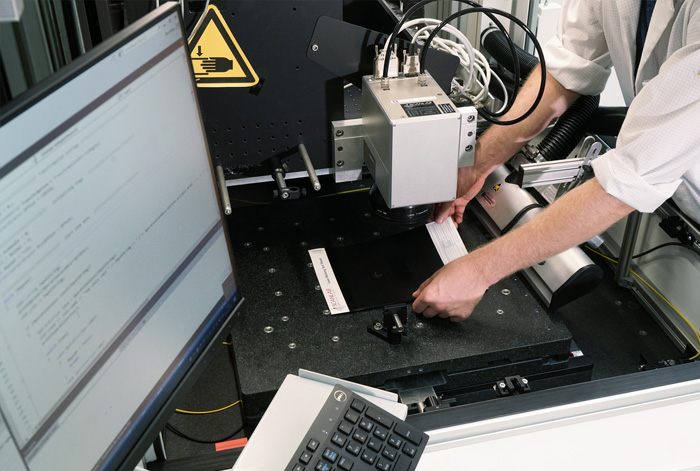
Dec. 6, 2018 : Even Greater Precision While Scanning Without Limits
-
New Power Control Functions for Virtually Boundaryless Image Fields
Puchheim, Germany – Dec. 6, 2018 – OEM laser deflection and positioning systems manufacturer SCANLAB GmbH now adds even more materialsprocessing power control capabilities to XL SCAN, the combined solution for simultaneously controlling scan heads and XY stages. For specialized industrial ultra-short pulse (USP) lasers, these new features and algorithms offer control capabilities such as: constant pulse intervals, deflection-angle-dependent energy densities or controlled laser power settings. The virtually limitless scanned image field has proven itself in practice and demonstrably boosts throughput, e.g. in film processing, PCB drilling and large-scale laser marking.
Laser processing is often constrained by a scanner’s image field. Large-scale processing traditionally gets performed stepwise via individual image fields, called ‘tiles’. But this method bears the risk of longer process times and stitching errors, i.e. misaligned marking at image field boundaries. To overcome this problem, SCANLAB and ACS Motion Control last year introduced a new scan concept. XL SCAN and the jointly developed syncAXIS control software enable simultaneous control of an excelliSCAN scan head and a mechanical XY stage with two servo axes. This solution employs an RTC6 control board to transmit motion profiles to both stage and scanner. The application’s precision is thereby limited solely by the stage’s and scanner’s precision – the control itself introduces no additional error. This concept decisively differentiates XL SCAN from competitors’ systems that close a feedback loop between the scan system and stage, but are constrained by very slow dynamics. A typical feedback loop’s 10-µs transmission/preview latency, together with a scanner speed of 2.5 m/s, could already cause deviations of 25 µm.
Positive Effects of Control
Larger systems can even employ multiple instances – such as two scan heads and four stages – controlled from a single PC. The new scan concept has meanwhile proven itself in diverse industrial and research organization applications, and its functionality is being further extended based on customer feedback. A new trajectory planner enables exact control of two laser parameters in conjunction with triggerable USP lasers. For users, this means a controllable pulse interval on the middle line or the inner contour of the laser track. Also available is laser power control – completely independently of scan patterns or motion speedsPlus, syncAXIS control allows also with various deflection angles to assure a constant fluence on the workpiece. “We’re positively surprised by our customers’ feedback. For instance, customers’ tests of XL SCAN for display fabrication and glass surface processing boosted their precision by a factor of 3 compared to other manufacturers’ systems,” reports SCANLAB CEO Georg Hofner regarding experience gained in recent months. “Appreciably enhanced user productivity is probably a further factor behind growing demand for this combined scan solution.”
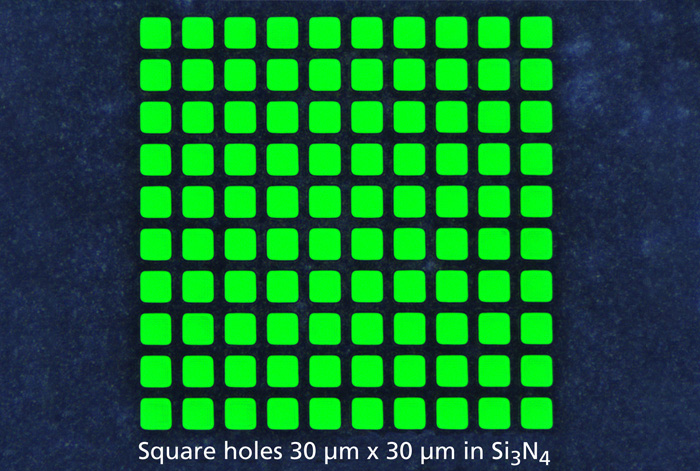
Nov. 9, 2018 : Highest Precision Enabled by precSYS inside
-
New machine concept transcends application limits for ever-smaller bore holes
Puchheim, Germany / Biel, Switzerland – Nov. 9, 2018 – Posalux SA has introduced a newly designed machine for electronics fabrication that employs SCANLAB GmbH’s highly integrated precSYS 5-axis scan sub-system. The Swiss manufacturer’s laser processing system is specifically tailored to demands of micromachining and is also usable for processing such challenging materials as polymers and ceramics. The machine features precSYS, which enables ultra-precise, highly dynamic beam deflection for guiding the laser spot onto workpieces. New standards in micro-drilling precision are set by results obtained for fabricating electronics test equipment, where bore hole corner radii smaller than 5 µm are now possible.
For years, continuous miniaturization in the electronics and semiconductor industry has naturally forced even the device connectors to become ever tinier. This means probe cards for testing electronics must themselves be made smaller, too. A key component of probe cards are their guide plates. They contain a mechanically stable substrate with thousands of micro-bore-holes through which the probe card’s contact pins must be safely and precisely guided to facilitate subsequent reliable contact with the semiconductor device’s connectors. Substrates are made of ceramics. And it is exactly this material that is so challenging to process.
Greatest Flexibility Combined with Intuitive Operation
Posalux’ laser processing machine specifically addresses these requirements. The integrated sub-system by SCANLAB, coupled with an ultra-short-pulse (USP) laser, enables processing of highly diverse materials such as metals, polymers and ceramics, without affecting them thermally. The scan solution provides five axes for defined laser beam guidance in the machine’s x,y,z coordinate axes and a simultaneous superimposed, adjustable angle of incidence (positive or negative). This makes it ideal for fabricating micro-bore-holes with high aspect ratios and freely definable geometries. And the intuitive user interface lets machine operators easily load a bore image, assign process parameters and scan the workpiece surface.Industry insiders are well aware of the imperative to create ever-smaller bore geometries. This makes it all the more impressive that Posalux’s precSYS infrared machine already fulfills application specifications previously thought only possible at green wavelengths. Here, customers’ usage demonstrates that even bore holes specified for 30 µm x 30 µm edge lengths, 300 µm material thickness and 10 µm separation are consistently achievable. In that application case, 46,000 bore holes were examined for positioning accuracy of ±2 µm, and corner radii smaller than 5 µm were reliably achieved. Thus, the user has available a robustly designed machine for processing any desired geometries in the µm range, as well as their exact localization to ±2 µm, across a maximum working area of 300 mm x 300 mm.
“We’re pleased that our micromachining sub-system performs so well in applications. And we’ve received consistently positive feedback, not just from Posalux, but also from other integrators and users in additional industries. After these superb results, we increasingly look forward to the results of a precSYS ‘green variant’.” comments SCANLAB’s CEO Georg Hofner on the developments.
The precSYS sub-system is currently produced exclusively for infrared lasers with a 1030 nm wavelength. A new variant is being developed for green lasers with a 515 nm wavelength, to thereby enable even finer structures and corner radii. Availability of initial prototypes is expected in summer 2019.
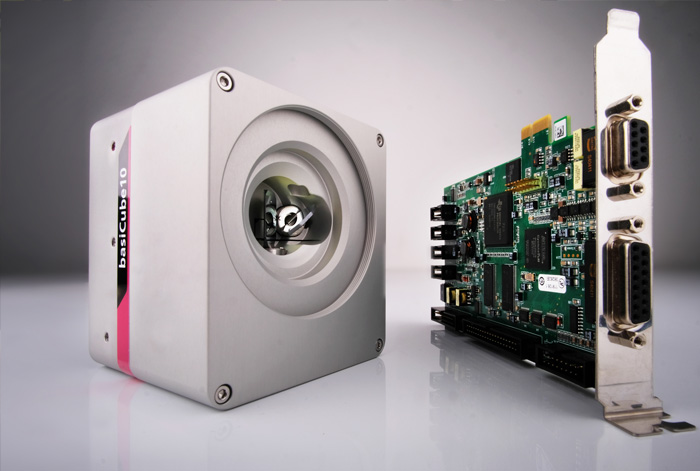
Oct. 30, 2018 : Entry-Level Scan Head Gains Even More Flexibility
-
New Interface Boosts Laser-Marking Capabilities
As the technology leader for high-precision laser scan systems, SCANLAB GmbH introduces an additional variant of its entry-level basiCube scan head. This new basiCube model’s SL2-100 interface now allows direct control by RTC5 boards. Execution of highly elaborate laser jobs and more complex graphics is thus possible for laser marking, subsurface glass engraving or similar applications.
For years, the market has valued basiCube scan heads as compact, economical systems with high write speeds. The favorable price/performance ratio often leads to their selection as ‘entry-level heads’ for laser marking or 3D plastics printing. With a classic XY2-100 interface, control was limited to RTC4 boards.
To extend operational flexibility, basiCube is available effective immediately as a variant with a SL2-100 interface. Thus, the RTC5 can provide its multi-million-entry list buffer to overcome the RTC4 control board’s limitation of 8,000 list entries. RTC5 boards also let the laserDESK professional laser processing software conveniently utilize these scan heads. Here, laserDESK serves both as a control center for the scan head and as a graphical user interface for easy creation, management and automated execution of complex laser processing jobs.

June 5, 2018: Scan System Intelligence for Mass Production
-
The excelliSCAN scan head reliably meets the toughest requirements for laser micro-machining and additive manufacturing
Well-timed for LASYS in Stuttgart, laser deflection and positioning technology leader SCANLAB GmbH announces series production of its high-end excelliSCAN scan system. This premium scan head proved its suitability for reliable industrial deployment in series micro-machining, and has now itself gone into series production. Last but not least, the scan head's built-in intelligence predestines it for integration in automated fabrication environments that leverage Industry 4.0 and IoT (internet of things).
As industrial processing complexity rises and the quality or safety-relevance of manufactured components increases, then even more applicable is the saying ‘time is money’. This fuels the need for processing solutions that raise productivity. Modern laser micro-machining methods are ideal for helping the electronics industry and other sectors to meet these challenges.
Extensive excelliSCAN test applications confirm that its unique servo design delivers considerable productivity gains for numerous applications. The scan system features novel SCANahead servo control as well as galvanometer scanners with highly precise digital angle sensors. And its in-built intelligence can be compared to autonomous driving – the scan head autonomously calculates its own control parameters and anticipates in real time for optimal navigation of curves. This servo innovation breaks through the irreconcilability between higher dynamics and maximum precision, and thus provides an appreciable productivity boost to users. Additionally, contour fidelity is substantially improved at high marking speeds, e.g. when traversing sharp corners and circles. Control is furnished as standard by the powerful RTC6 control board, now available as an Ethernet variant.Another element of the Smart Factory
And this premium scan system offers even more power for factories of the future. Integrated functions like online status monitoring or acquisition of operating times and process data allow not only integration in networked structures, but also retrospective process analysis.
"We're very pleased with positive user feedback on the excelliSCAN. When applications have particularly challenging technical requirements, then our own standards for the applied technologies are likewise exceptionally rigorous," explains SCANLAB CEO Georg Hofner regarding the start of series production. "To secure future gains in
maximum speed and precision, we'll continue on the trajectory servo path we have embarked upon. The next step will involve planning trajectories." In view of the strong demand for high-precision scan systems well-suited to microstructuring and 3D printing, SCANLAB is already working to extend its excelliSCAN family: scan heads with 20 mm and 30 mm apertures are in the pipeline.

April 12, 2018: Superior Support for Japanese Laser Welding Applications
-
Blackbird Robotics intensifies partnership with Intech in Japan
Remote laser welding expert Blackbird Robotersysteme GmbH is intensifying its presence in the Japanese market. Once again, the German manufacturer will exhibit at the Japan International Welding Show in Tokyo, together with its Japanese sales agent Intech CO., Ltd. The benefit for industry customers is that Intech operates as a one-stop-shop – offering all-in-one welding solutions that include the laser source, a premium scan system and a control system. With many years of expert know-how and trustful cooperation with Blackbird, Intech supports users by configuring individual welding solutions for flexible and efficient manufacturing processes.
Japan’s manufacturing industry – and especially its automotive sector – need innovative, robot-assisted laser welding systems to increase flexibility, process safety and productivity.
Blackbird Robotics, together with its associated company SCANLAB, supply high power scan heads in a sophisticated range of laser welding systems. The product offer with 2D and 3D scanners include features like spiral welding and on-the-fly capabilities, as well as laser beam oscillation and optical zoom for highly flexible car body assembly and parts attachment.The intelliSCAN FT 2D scan head, for example, is specifically designed for easy integration into robot and gantry systems. With full industrial suitability, this scan system is ideal for welding flat components and other electromobility applications.
Rising importance of weld seam analysis
Growing demand for in-process quality control led Blackbird to introduce to Japan its latest laser welding solution with a built-in OCT (optical coherence tomography) scanner. The system provides integrated edge tracking and seam topology measurement. Unlike other measurement methods, OCT-based distance measuring evaluates detailed data with full flexibility ahead of, within and after the laser welding process itself. The acquired data allows careful assessment of seam quality as well as detection and recording of welding defects, and can be used at any time for quality assurance procedures.
Blackbird and Intech, collaborating since 2011 and exhibiting together again at the Japan International Welding Show in 2018, currently work on several joint customer installations for subcontractors in Japan's car manufacturing industry; other branches to follow. “Market feedback is very positive and Japanese customers confirm the high quality of Blackbird products. We are very pleased with the fruitful cooperation and look forward to continuing this long-term partnership,” comments Yukihiro Okumura, President of Intech CO., Ltd.

Feb. 23, 2018: On-Site Service for Extra Precision
-
precSYS 5-axis micromachining system's individualized support boosts customer productivity
SCANLAB GmbH's precSYS micromachining system is drawing very positive responses from integrators and system builders. Two years after market launch, users from America, Asia and Europe consistently praise this scan solution's exceptionally high precision, dependability and versatility. The system's individualized customer service, with in-person commissioning guidance, training and on-site application support, has proven to be of highly practical advantage. Customers who build laser processing systems to fabricate products, such as electronic devices or automotive components, achieve good processing results much more quickly, thus boosting their productivity.
The robust precSYS 5-axis scan system was created for industrial volume production via ultra-short-pulse (USP) laser micromachining. The system enables fabrication of flexibly definable geometries, e.g. bore holes that are positively or negatively conical, ideally cylindrical, circular, rectangular or elliptical, as well as cavities with high aspect ratios and all with very good quality entrance and exit edges. Moreover, it's equipped with an integrated controller, an embedded PC and a user-friendly graphical interface (GUI). The 3D software allows users to visualize and precisely plan their laser jobs in advance, thereby avoiding mistakes.
Particularly welcome are the ultra-precise factory pre-calibration, default alignment software features, alignment aids and optional sensor-based automatic fine adjustment. This fine adjustment option enables automatic beam-position checking and correction in less than a minute, to ensure accurate positioning within the image field and long-term stability during processing.
With its in-person commissioning guidance, the system's on-site customer service includes a professional acceptance procedure to ensure that the delivered system exactly fulfills its specifications. Moreover, this support makes sure that the micromachining subsystem works optimally and stably in conjunction with the customer's specific lasers. Thus, very good results are quickly achievable even in the initial test phase.SCANLAB is currently preparing additional training courses for system builders and integrators to cover safe DIY commissioning as well as preventive maintenance concepts and secure remote access.
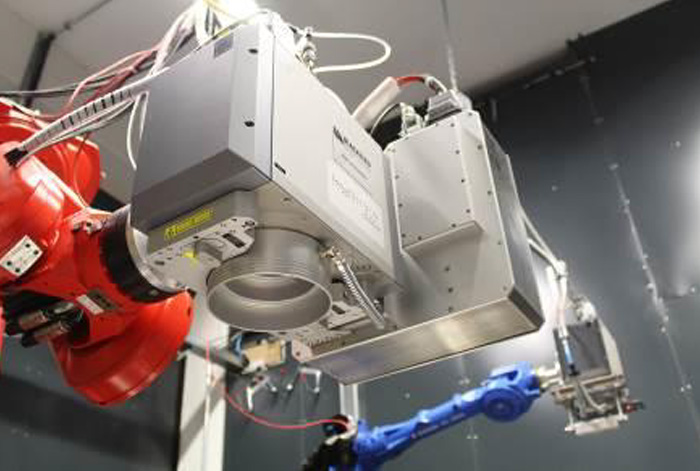
December 18, 2017: Next Stage of OCT for Remote Laser Welding
-
Photonics research project targeting flexible, networked manufacturing
As the technology leader for intelligent laser welding solutions, Blackbird Robotersysteme GmbH is participating in a research project that intensively explores optical coherence tomography's potential for remote laser welding in auto manufacturing. The Technical University of Munich's Institute for Machine Tools and Industrial Management (iwb), together with multiple industrial partners such as BMW and OCT sensor maker Precitec, are investigating innovative technology for more flexibility in body construction, particularly electro mobility. Germany's Federal Ministry of Education and Research sponsors the project under the ‘Photonics Research Germany’ research incentive program.
The German government's clear goal is to advance electromobility. A look at the causes of very disappointing electric vehicle sales to date shows for example inflexible production structures which do not allow cost-efficient manufacturing of smaller volumes. Future-proof production systems and bonding techniques need to work flexibly, adaptively and with connectivity. To maximize efficiency and autonomy, machines will require much more information about their surroundings and the objects to-be-processed. This is precisely where contactless methods such as OCT, combined with photonic sensors, offer tremendous potential for detecting orientation and status, assessing process results, and sharing and documenting this information within the manufacturing process.
Further development of these industrial advantages is the goal of the research initiative 'Photonics for Flexible, Networked Production' and particularly the research project 'Robot-Supported, Scanner-Based Optical Coherence Tomography in Remote Laser Welding for Process Chain Flexibility in Body Construction' (RoKtoLas). Project partners BMW AG, Blackbird Robotersysteme GmbH, Precitec GmbH & Co. KG, Emil Bucher GmbH & Co. KG, applicationtechnology GmbH & Co. KG and the Technical University of Munich's iwb are seeking an innovation leap through alternative bonding technology for raw body construction. The research project is sponsored by Germany's Federal Ministry of Education and Research under funding code 13N14551 and supported by the VDI Technology Center.
Weld seam analysis for more efficiency in production
The project utilizes a Blackbird scan solution consisting of an intelliWELD PR scan head from affiliated company SCANLAB, a ScanControlUnit and an OCT scanner. The integrated OCT technology employs single-point high-speed distance measurement based on interferometry. Imaging relies on ultra-fast workpiece scanning with a dedicated OCT scanner coaxially coupled in the weld scanner. This welding solution thus provides integrated edge tracking and seam topology measurement. Unlike other measurement methods, OCT-based distance measuring can acquire and evaluate detailed data with full flexibility ahead of, within and past the actual laser process zone. This includes, for example, individual analysis of the to-be-welded components and seam tracking of fillet welds, as well as exact detection and parameterization of potential weld defects or imprecision during the weld process. Such data allows assessment of seam quality as well as detection and recording of defects such as inadquate width, penetration, open pores and faulty positioning. This data can be used in a clock-period-neutral manner for quality assurance procedures that eliminate the need for downstream quality assurance steps.
"It's conceivable the future will offer numerous additional application possibilities – even reaching beyond the auto industry." explains Dr. Ulrich Munzert, Chief Technology Officer at Blackbird Robotersysteme GmbH, regarding the OCT method. "In light of the automotive sector's demanding requirements, this research project now allows us to accumulate practical experience on simplifying manufacturing approaches and processes while weighing them against alternatives."
